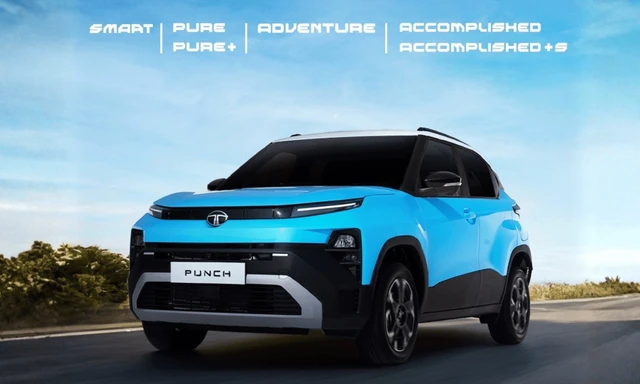Japan Aims To Eliminate Petrol Vehicles By Mid-2030s, Boost Green Growth
Japan aims to eliminate petrol-powered vehicles in the next 15 years, the government said on Friday in a plan to reach net zero carbon emissions and generate nearly $2 trillion a year in green growth by 2050. The "green growth strategy," targeting the hydrogen and auto industries, is meant as an action plan to achieve Prime Minister Yoshihide Suga's October pledge to eliminate carbon emissions on a net basis by mid-century.
Suga has made green investment a top priority to help revive the economy hit by the COVID-19 pandemic and to bring Japan into line the European Union, China and other economies setting ambitious emissions targets.

To accelerate the spread of electric vehicles, the government targets slashing the cost of vehicle batteries by more than half to 10,000 yen or less per kilowatt hour by 2030
The government will offer tax incentives and other financial support to companies, targeting 90 trillion yen ($870 billion) a year in additional economic growth through green investment and sales by 2030 and 190 trillion yen ($1.8 trillion) by 2050.
A 2 trillion yen green fund will support corporate investment in green technology.
The plan seeks to replace the sale of petrol-powered vehicles with electric vehicles, including hybrid and fuel-cell vehicles, by the mid-2030s.
To accelerate the spread of electric vehicles, the government targets slashing the cost of vehicle batteries by more than half to 10,000 yen or less per kilowatt hour by 2030. It aims to boost hydrogen consumption to 3 million tonnes by 2030 and to about 20 million tonnes by 2050 from 200 tonnes now, in areas such as power generation and transportation.
The strategy identifies 14 industries, such as offshore wind and fuel ammonia, target the installation of up to 45 gigawatts (GW) of offshore wind power by 2040.
(This story has not been edited by NDTV staff and is auto-generated from a syndicated feed.)
Latest News
 Jaiveer Mehra | Jan 7, 2026Tata Harrier, Safari Petrol Launched In India: Prices Start From Rs 12.89 LakhBoth SUVs get the 1.5-litre Hyperion turbo-petrol engine from the Sierra in a higher state of tune.3 mins read
Jaiveer Mehra | Jan 7, 2026Tata Harrier, Safari Petrol Launched In India: Prices Start From Rs 12.89 LakhBoth SUVs get the 1.5-litre Hyperion turbo-petrol engine from the Sierra in a higher state of tune.3 mins read Carandbike Team | Jan 7, 2026Toyota Urban Cruiser EV India Debut On January 19Toyota’s entry EV is the sister model to the Maruti Suzuki e Vitara and shares the same underpinnings and tech.1 min read
Carandbike Team | Jan 7, 2026Toyota Urban Cruiser EV India Debut On January 19Toyota’s entry EV is the sister model to the Maruti Suzuki e Vitara and shares the same underpinnings and tech.1 min read car&bike Team | Jan 7, 2026Tata Punch Facelift Variants, Key Features RevealedThe Punch facelift will be offered in four familiar key trim levels and six variants.1 min read
car&bike Team | Jan 7, 2026Tata Punch Facelift Variants, Key Features RevealedThe Punch facelift will be offered in four familiar key trim levels and six variants.1 min read car&bike Team | Jan 7, 2026Skoda Kylaq Prices Hiked By Up To Rs 19,000Prices for the Kylaq subcompact SUV now start at Rs 7.59 lakh (ex-showroom).1 min read
car&bike Team | Jan 7, 2026Skoda Kylaq Prices Hiked By Up To Rs 19,000Prices for the Kylaq subcompact SUV now start at Rs 7.59 lakh (ex-showroom).1 min read Amaan Ahmed | Jan 7, 2026Ather 450X To Get Cruise Control; All 2025 Examples Will Receive Infinite Cruise Via OTA UpdateMore than 44,000 customers who bought the Ather 450X in 2025 will be eligible for the over-the-air update that will introduce 'Infinite Cruise'.1 min read
Amaan Ahmed | Jan 7, 2026Ather 450X To Get Cruise Control; All 2025 Examples Will Receive Infinite Cruise Via OTA UpdateMore than 44,000 customers who bought the Ather 450X in 2025 will be eligible for the over-the-air update that will introduce 'Infinite Cruise'.1 min read Jaiveer Mehra | Jan 7, 2026Afeela SUV Prototype Is Sony-Honda’s Next EVThe second model under the Sony-Honda joint venture to debut in production guise in 2028.1 min read
Jaiveer Mehra | Jan 7, 2026Afeela SUV Prototype Is Sony-Honda’s Next EVThe second model under the Sony-Honda joint venture to debut in production guise in 2028.1 min read
 Amaan Ahmed | Jan 3, 2026VLF Mobster 135 300 KM Review: Fun But FlawedA 125 cc scooter with Italian design and Chinese genes is a rare combination, and while some may be tempted to dismiss it because of its origins, the VLF Mobster shows 125s can also be exciting – but not without compromises.11 mins read
Amaan Ahmed | Jan 3, 2026VLF Mobster 135 300 KM Review: Fun But FlawedA 125 cc scooter with Italian design and Chinese genes is a rare combination, and while some may be tempted to dismiss it because of its origins, the VLF Mobster shows 125s can also be exciting – but not without compromises.11 mins read Preetam Bora | Dec 30, 2025TVS Orbiter Review: Real-World Performance and Range TestedThe TVS Orbiter is a promising electric scooter promising decent range, practicality and pricing. But is there any reason to avoid it? We spent a few days getting to know it better.9 mins read
Preetam Bora | Dec 30, 2025TVS Orbiter Review: Real-World Performance and Range TestedThe TVS Orbiter is a promising electric scooter promising decent range, practicality and pricing. But is there any reason to avoid it? We spent a few days getting to know it better.9 mins read Jafar Rizvi | Dec 24, 2025MG Windsor EV 38 kWh Long-Term Report: IntroductionThe Windsor EV has joined our garage, and before it settles into daily duty, I took it out to get a sense of what living with an electric car is like.4 mins read
Jafar Rizvi | Dec 24, 2025MG Windsor EV 38 kWh Long-Term Report: IntroductionThe Windsor EV has joined our garage, and before it settles into daily duty, I took it out to get a sense of what living with an electric car is like.4 mins read Seshan Vijayraghvan | Dec 23, 20252026 Kia Seltos Review: Formula Is Spot On, But Is The Timing Right?The 2nd-gen Kia Seltos has arrived, but it has the challenge of facing strong rivals like the Victoris and Sierra. The question is simple - Does it still have what it takes?9 mins read
Seshan Vijayraghvan | Dec 23, 20252026 Kia Seltos Review: Formula Is Spot On, But Is The Timing Right?The 2nd-gen Kia Seltos has arrived, but it has the challenge of facing strong rivals like the Victoris and Sierra. The question is simple - Does it still have what it takes?9 mins read car&bike Team | Dec 26, 2025Tata Punch EV Long-Term Second Report: Highway Performance, Pros & ConsAfter a week of living with the Tata Punch EV Long Range—including a proper Mumbai-Nashik highway test—we've learned what this little electric SUV is really made of.1 min read
car&bike Team | Dec 26, 2025Tata Punch EV Long-Term Second Report: Highway Performance, Pros & ConsAfter a week of living with the Tata Punch EV Long Range—including a proper Mumbai-Nashik highway test—we've learned what this little electric SUV is really made of.1 min read






















































































































